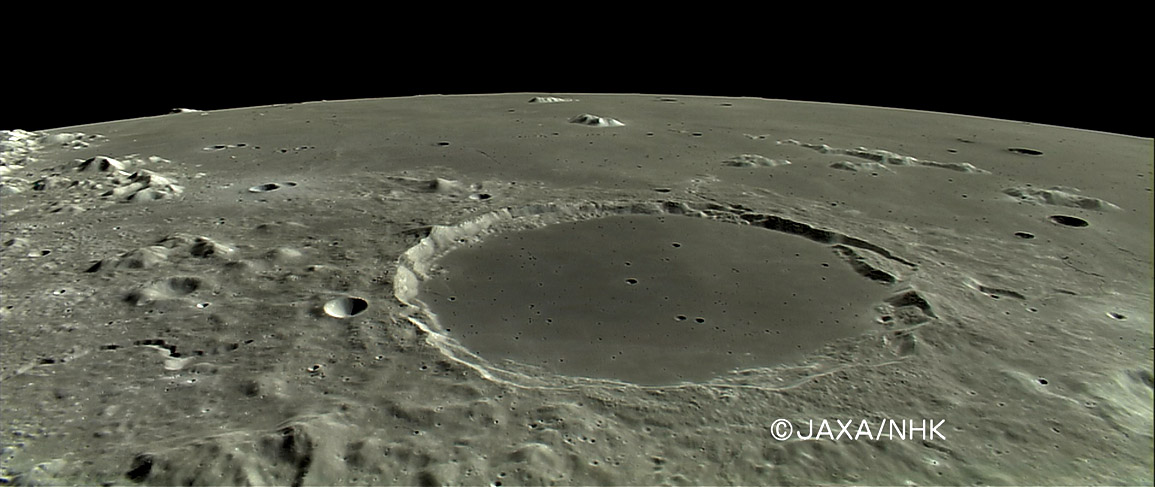April 14, 2008
From Childhood Dreams

image from the Kaguya Image Gallery (c) JAXA/SELENE
This is the stuff of science fiction, a modern version of Chesley Bonestell's evocative paintings that initiated a fascination with space for millions of people in the 1950s. This magnificent newly released Kaguya HDTV image provides a sweeping perspective view over Plato and southern Mare Imbrium. This is what the crater and the scene look like from orbit - this is what I hoped to see myself when I was young. The inner slopes of the crater's eastern wall appear to be quite steep, but worse, from a trafficability point of view, is that they are long and uninterrupted - it would be nearly impossible to go from the rim to the floor. I love the near-profile view of the peaks of the Alps Mountains (the Alpine Valley is just out of the image to the left) and the individual mountains springing out of the mare lavas. On the horizon at upper left is Mt. Piton with a western slope of about 15° and an eastern one that may be 40°-50° - the shadowing makes measurement uncertain. In front of Plato is Mt Pico, with Pico Beta beyond, and the Teneriffe Mountains straggle across the upper right. The smooth curvature of the horizon is a testament of the low viscosity of the lavas that flowed hundreds of kilometers down tiny slopes.
Chuck Wood
Technical Details
Here is the full resolution view. JAXA has now released high quality versions of two if its wonderful HDTV videos, and a few additional still images like this. So far they are only available on the Japanese version of the website and are hard to find and hard to provide directions to!
Related Links
Rükl plate 3, 4, 11 & 12
Yesterday's LPOD: Streamers
Tomorrow's LPOD: How Did It Get There?
COMMENTS
(1)
I understand that Plato crater was once referred to as the "Greater Black Lake" by Polish astronomer, Johanes Hevelius, however, this close-up image beautifully shows that not all the enclosed region is that dark -- the lava deposits trending east-west are that bit darker than those on the north-south. I'm assuming that the east-west deposits are older and more iron-rich, while those to the north and south are younger and more Ti-rich (I understand that the region, along with Imbrium's northern rim are quite different to 'normal' highlands). Presuming that this is the case (forgive me if I'm wrong), does this mean then that the original lava source came from those latter (n-s) regions? Whatever the answer, this is a truly wonderful image, but I do hope that JAXA can improve their colour scheme :-) John --- www.moonposter.ie
(2) Chesley Bonestell's painting in the above link shows how the Moon is supposed to look! That's the Moon I grew up with. The real Moon, of course, is fascinating. However, I miss the jagged peaks and soaring cliffs, etc. portrayed by artists and science fiction. I guess there are no jagged mountains on the Moon. (??) And the only soaring, sheer cliffs are probably in the Alpine Valley and in Schroter's Valley. (??) Too bad the real Moon is more like a Nerf ball than the jagged Moon of our imagination.
--Bill
(3) Extraordinary photograph! Thanks Chuck, Kaguya, JAXA.
-- Danny.
COMMENTS?
Register, Log in, and join in the comments.



